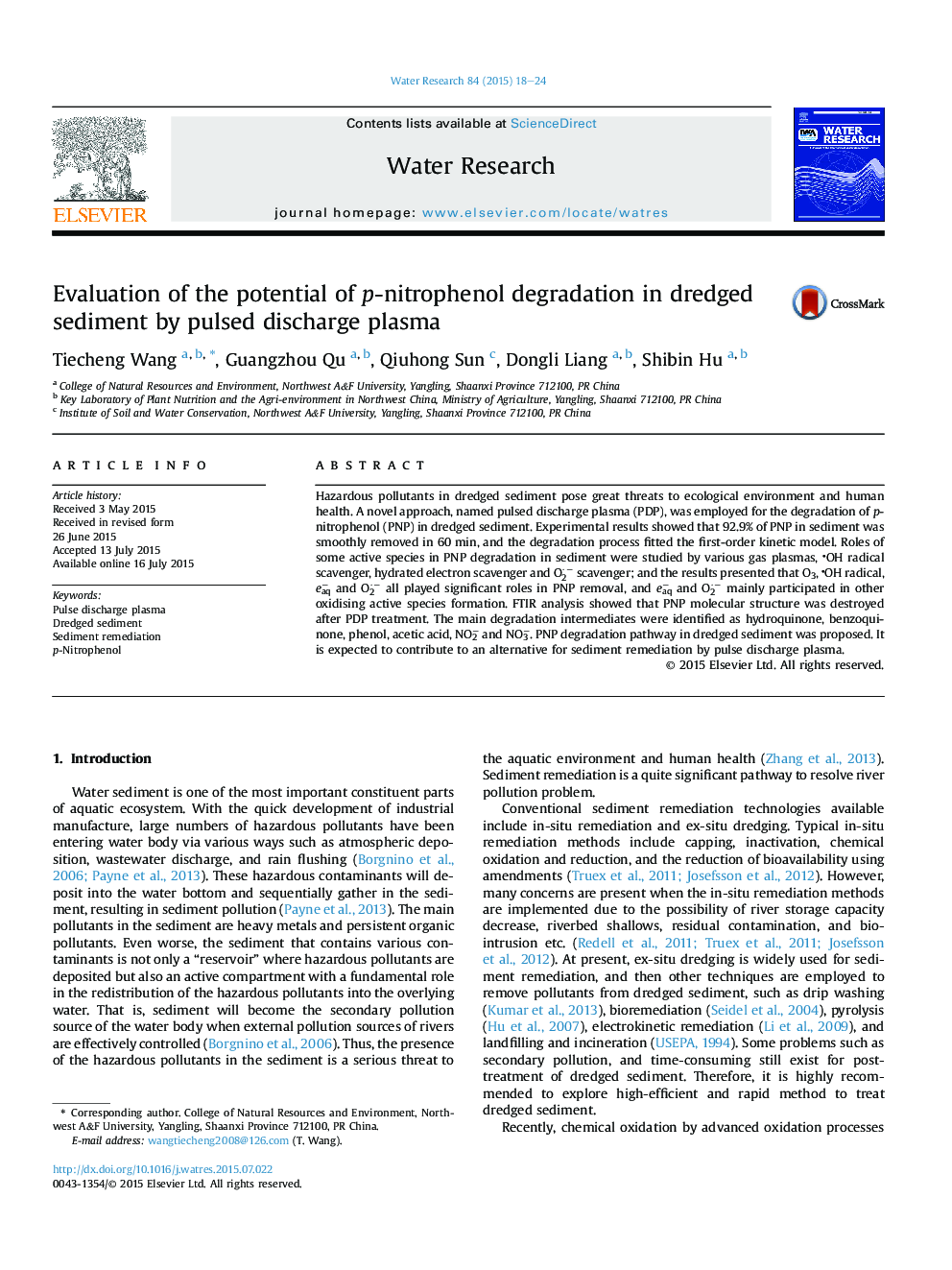| Article ID | Journal | Published Year | Pages | File Type |
|---|---|---|---|---|
| 4481068 | Water Research | 2015 | 7 Pages |
•Pulsed discharge plasma is proposed to remove PNP from dredged sediment.•PNP degradation efficacy under various discharge voltages is evaluated.•Roles of various active species in PNP degradation in sediment are investigated.•Possible pathway of PNP degradation in sediment in this system is proposed.
Hazardous pollutants in dredged sediment pose great threats to ecological environment and human health. A novel approach, named pulsed discharge plasma (PDP), was employed for the degradation of p-nitrophenol (PNP) in dredged sediment. Experimental results showed that 92.9% of PNP in sediment was smoothly removed in 60 min, and the degradation process fitted the first-order kinetic model. Roles of some active species in PNP degradation in sediment were studied by various gas plasmas, OH radical scavenger, hydrated electron scavenger and O2·− scavenger; and the results presented that O3, OH radical, eaq− and O2·− all played significant roles in PNP removal, and eaq− and O2·− mainly participated in other oxidising active species formation. FTIR analysis showed that PNP molecular structure was destroyed after PDP treatment. The main degradation intermediates were identified as hydroquinone, benzoquinone, phenol, acetic acid, NO2− and NO3−. PNP degradation pathway in dredged sediment was proposed. It is expected to contribute to an alternative for sediment remediation by pulse discharge plasma.
Graphical abstractFigure optionsDownload full-size imageDownload high-quality image (282 K)Download as PowerPoint slide
